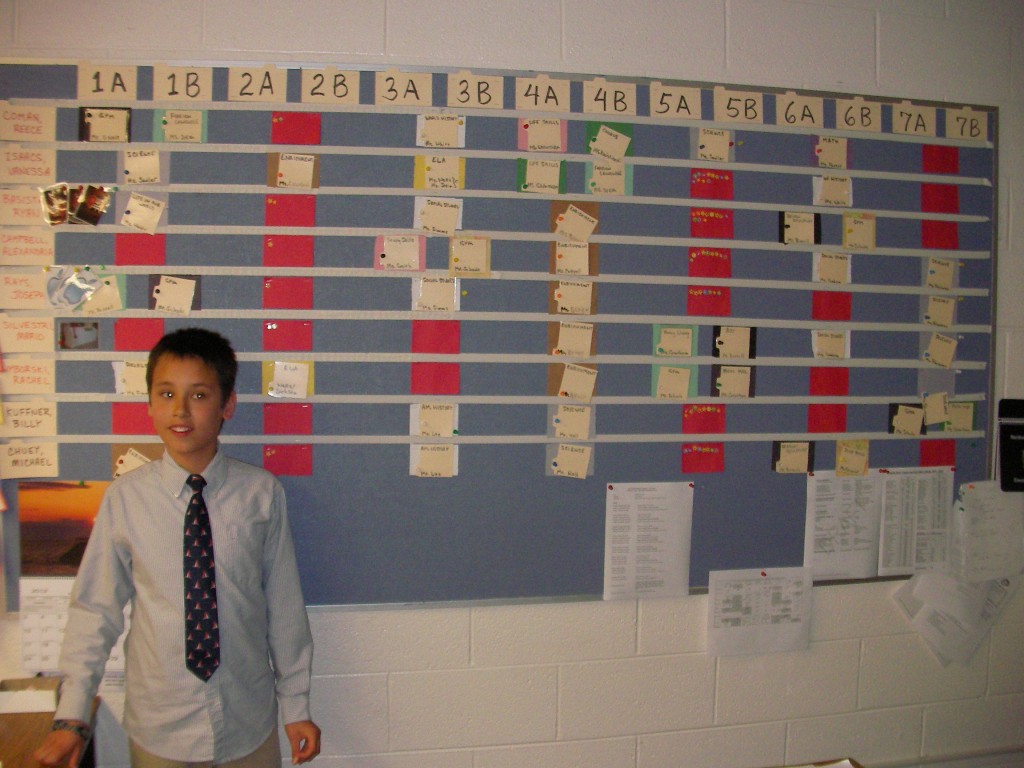
Parenting, Special Education  The deal breaker for my son is always the little transitions, such as who will be there to greet him when he steps off the bus or how he will spend his recess time. Unfortunately, these transitions are not typically addressed in IEPs. Find out exactly what school policies for drop off and pick up are, because these are the most sensitive periods of the school day for students with special needs. Are parents allowed in the building at these times? How will the student know when to go to his or her locker and what to retrieve? What about support between classes?
The deal breaker for my son is always the little transitions, such as who will be there to greet him when he steps off the bus or how he will spend his recess time. Unfortunately, these transitions are not typically addressed in IEPs. Find out exactly what school policies for drop off and pick up are, because these are the most sensitive periods of the school day for students with special needs. Are parents allowed in the building at these times? How will the student know when to go to his or her locker and what to retrieve? What about support between classes?
10 Tips To Help Your Child with Special Needs Prepare For Middle School
As I prepare for my son’s transition from middle school to high school, I’ve been reflecting on all that’s changed in the past three years, a period of transformation and tremendous personal growth for my son. Back when we first started planning for middle school, I was all nerves, fraught with worry. I didn’t know how my son would be able to navigate the movements from class to class, time his visits to his locker, handle the increased academic demands and find friendly faces in the cafeteria during lunch. At the time, I took steps to reduce pressure on my son and make the transition from elementary to middle school as smooth as possible over several months. By working with the school team, I was able to reinforce at home what my son was learning in school. These are ten steps that can help make any school-to-school transition less painful for students with special needs.1. Start at the top
Before we had any transition meetings with my son’s team, I attended a small group tour of the middle school led by the principal. Afterwards, I talked to the principal about my son’s needs, and his openness set the tone for the whole transition. I did not expect the principal to be familiar with the details of my son’s case, but I got plenty of information about school programs and policies. These are the types of questions that a principal can answer:- What types of special education classrooms does the school have?
- Does the school offer co-taught classes?
- Is there a peer-to-peer support group? How often do they meet?
- Can you make special accommodations for drop-off and pick-up, or can you tell me what the school policies are?
- What type of assistance can students receive during lunch?
- What happens when students finish eating lunch? Do they go to recess or can they get a library pass?
- Can the school offer any extra support for the transition during the summer - for example, a day camp with school guidance counselors or a few days when students are welcome to walk through their schedules?
2. Learn your way around
I got a map of the school from the main office, and arranged to visit and take photographs on the day after the last day of school, when the teachers were packing up their classrooms. I also scheduled swimming lessons for my son at the school during the summer, so that we would have the opportunity to walk around the school. During the week before school started, we walked through my son’s schedule several times.3. Identify all of your options
Middle school offers many different settings for special education, and every school handles special education differently. Often the best fit is a combination of special education and general education, and a middle school schedule may have more flexibility than elementary school to support that need. Some possibilities are:- Self-contained classroom with therapeutic support and/or life skills program
- Self-contained classroom with inclusion for lunch, recess and some electives
- Self-contained classroom for a few select classes (such as English and study skills for students with language delays) and general education for the rest of the day
- General education with co-taught classes and/or a paraprofessional
- General education with one hour per day for resource room support
- General education with one hour per day for a learning consultant or study support
4. Identify key players
The case manager or IEP team leader is the go-to person for questions and support, but others who may not necessarily attend the IEP can provide assistance, too:- The guidance counselor is an excellent resource for information about standardized testing, class size, course requirements and different course levels
- The school secretary knows everything that is happening every day.
- Peer-to-peer volunteers have unique insight into students’ strengths and weaknesses.
- Coaches and extracurricular leaders can suggest activities that fit your students’ needs.
5. Plan out transitions
 The deal breaker for my son is always the little transitions, such as who will be there to greet him when he steps off the bus or how he will spend his recess time. Unfortunately, these transitions are not typically addressed in IEPs. Find out exactly what school policies for drop off and pick up are, because these are the most sensitive periods of the school day for students with special needs. Are parents allowed in the building at these times? How will the student know when to go to his or her locker and what to retrieve? What about support between classes?
The deal breaker for my son is always the little transitions, such as who will be there to greet him when he steps off the bus or how he will spend his recess time. Unfortunately, these transitions are not typically addressed in IEPs. Find out exactly what school policies for drop off and pick up are, because these are the most sensitive periods of the school day for students with special needs. Are parents allowed in the building at these times? How will the student know when to go to his or her locker and what to retrieve? What about support between classes?



